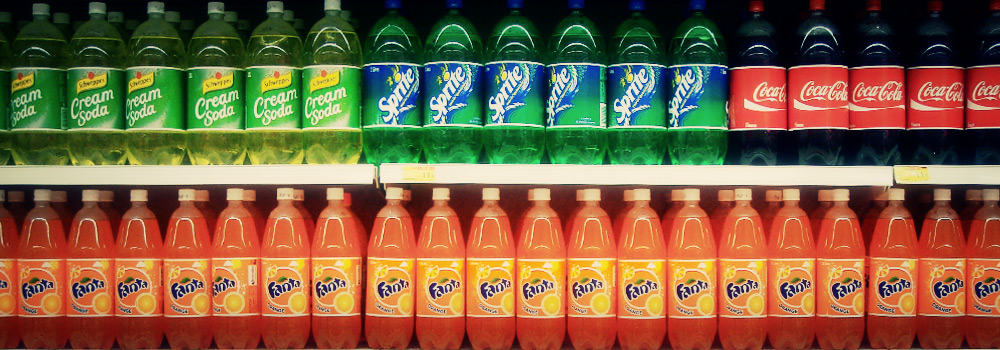
Whatever you’re selling, your product is now seen as a commodity.
Not so long ago, brands had the power to influence consumer behavior by throwing money at advertising. Through a combination of reach and frequency, marketers were able to steer customer preferences, build brand image, and manipulate perceived value in their products or services.
Today, that power has passed to the consumer. Preferences, behaviors, and perceptions are now shaped and dictated (for better or worse) by the Wisdom Of The Crowd.
The frightening realization of the above for business owners, sales directors, and marketing professionals goes far further than just the implication in marketing and messaging. Getting your audience to take notice of you is not only much harder than it used to be; it’s less easily manipulated. Simply throwing money and/or resources at the issue is no longer an assurance that the problem will go away.
Brand Democratization
It’s true that social media channels are largely for being the catalyst that triggered the shift in power from brand to consumer. However, brands that blame social media for inspiring consumers to take a stand are misinformed. Customers have always voiced their opinions and formed in groups. The difference that social brings is in reach and longevity.
Previously one’s voice was limited by geographic or social boundaries. Social brings the ability to amplify the voice and transcend both social and territorial boundaries, as well as serving as a virtual entity for others to share, and view over time. This difference alone has intrinsically altered the marketer/consumer relationship dynamic, probably forever.
The Birth Of The Consumer Organism
The rapid implementation of social channels as an adjunct into buyer opinion has created a continually learning, evolving and (increasingly) short-tempered consumer ‘organism’.
Think of all the various buyer segmentations as forming a single Group-Think Organism, similar in manner to a cell nucleus or a hive of honey bees. Abstracting social behavior, we can see how new thoughts and opinions are shared across channels, breaking-off from the host organism to form individual entities of their own. A kind of social mitosis, if you will.
Where once we had brand messaging and advertising directing and influencing the conversation, today we have community dialog and engagement. A brand may be proposed, discussed, lauded, or ridiculed by an evolving, self-administering, self-determinating entity. Products, services, and even entire organizations can be empowered or disenfranchised by the will of the Group. While a brand’s contribution of the conversation may be welcomed, it can no longer manipulate patterns or decisions without permission and self-acknowledgement from the Group itself.
If you dare to pull the tiger’s tail, don’t be surprised if you get bitten. And never forget that public opinion is a fickle beast.
Why Are All Products Now Commodities?
The perception of your brand has a direct correlation to how much advocacy it can generate. If you’re liked, it doesn’t mean you win. It may, however, mean you have a chance. The constantly-evolving tenets of social SEO play a critical role in this new value-exchange relationship. A brand’s listing can be elevated – or otherwise – by realtime, contextual, social commentary within your social graph. This doesn’t mean that the quality of your product or service has become irrelevant – and least not yet.
However, it also means that product quality alone can no longer be relied upon as sufficient for business success.
An added bell here, a new whistle here. It’s no longer enough to be “a bit better”. The only way to gain attention in a socially-charged consumer sphere of influence is with radical change. In a world dominated by shades of gray, the only way to stand out is by being black or white.
How Brand Ideology Influences The Value Proposition
A great product or service is all very well. But that alone is rarely enough today. Audience resonance now depends on the brand standing for an awesome idea as much as an awesome product – perhaps even more.
That’s what I mean when I say that your products, no matter how great you think they are, have become commodities.
Public opinion increasingly dictates consumer ‘need’ for a particular product – both positively and negatively. While the brand’s role in participating in these conversations is important, it’s not enough on its own. Brands need to create strong associations with real world influences to develop resonance and authenticity which their audience can identify. In short, we’re talking about a brand’s ideology.
Brand Ideology can be described as the emotional trigger sparked when an audience thinks about a brand. It’s the association that a brand – or an organization – has with its target market’s hopes, aspirations, beliefs, and/or lifestyle.
Rather than thinking in pragmatic terms of “feature / advantage / benefit”, brand ideology calls on the audience imagination. At its most basic, it manifests itself in terms or sponsorships or native advertising. At its most acute, it results in people camping out overnight to be one of the first to buy an iPhone, or Felix Baumgartner freefalling 128,000 feet with Red Bull.
Having a strong ideology to which an audience can believe and relate creates the strongest, most active, and most loyal brand advocates. Moreover, whereas product features and messaging can be commoditized, replicated, and disrupted (by the public as much as by the competition) a brand ideology offers more staying power. It appeals to one’s heart more than to one’s head which (if accepted) is more compelling and less easily refuted.
Advocacy As Business Strategy
The game has changed, even while business owners continue to play by outdated rules. Acknowledge that the Group-Think ‘Consumer Organism” is effectively in charge of your product strategy, for they are the ones actively defining the rules of engagement.
Your business strategy is now based upon building advocacy. About creating an authentic ideology association to deploy across appropriate media and social channels, and having advocates nurture that ideology to the point where it takes on a life of its own.